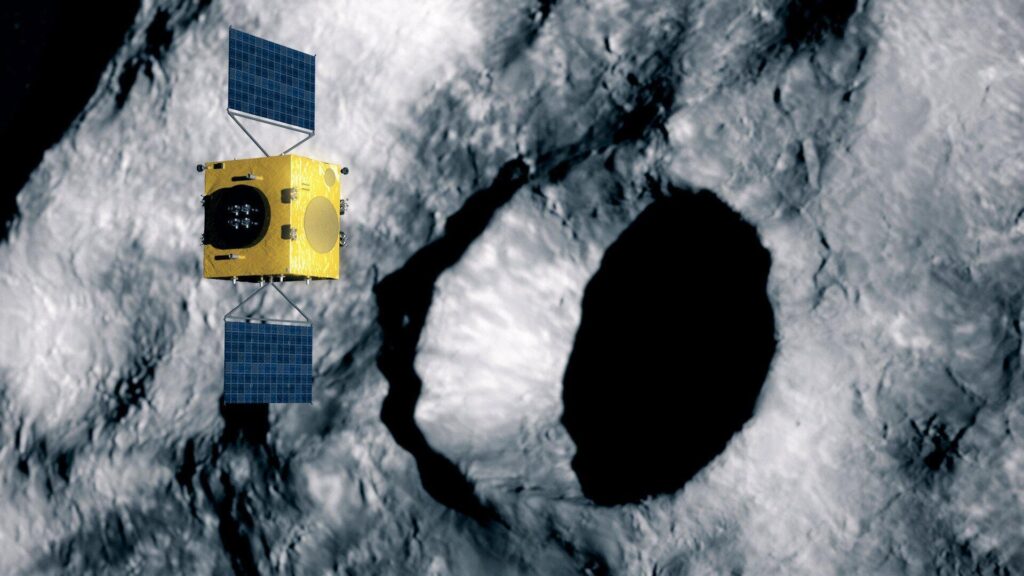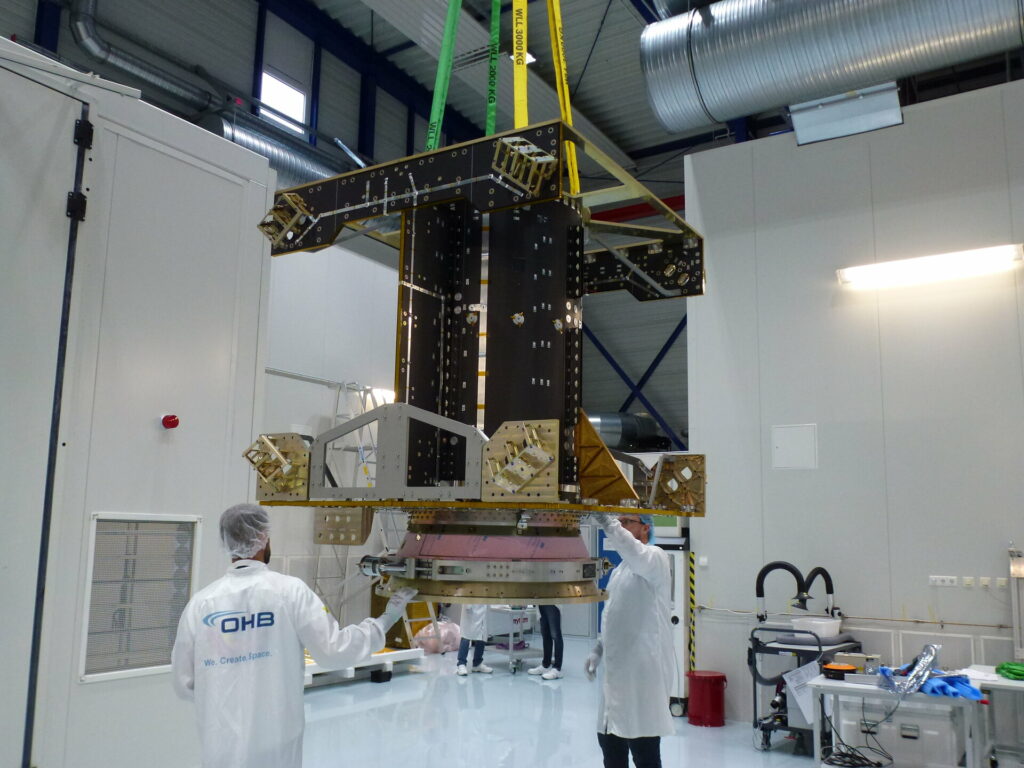The propulsion module of the Hera mission was successfully delivered to the assembly shop of the Italian company Avio. In the near future, specialists will begin installing fuel tanks, power units, pipelines and other elements necessary for a successful interplanetary flight.
Hera Mission Objectives
The Hera mission was approved by ESA in 2019. It is a continuation of the DART project. Within its framework, on September 26, 2022, a NASA probe of the same name will crash into the 160-meter asteroid Dimorphos (it is a moon of the larger 780-meter asteroid Didymos).The main purpose of the operation is to check the possibility of changing the orbit of a small body by kinetic action.

The collision of DART with an asteroid and its consequences will be monitored by radars and a network of ground-based observatories. Another participant of the event will be the Italian cubesat LICIACube. It will separate from DART a few days before the collision and photograph the moment of impact using the Gecko camera, built by Dragonfly Aerospace, a company owned by Ukrainian entrepreneur Max Poliakov.
Hera will visit Didymos and Dimorphos as part of the next phase of the mission. The European probe will carefully measure the crater left after the DART impact, as well as conduct a comprehensive study of both asteroids. These data will help astronomers better understand the properties and behavior of such binary systems.
It is assumed that together with Hera, a pair of microsatellites based on the cubesat platform will also be launched to Didymos. They will be the first European vehicles of this class to go beyond near-Earth orbit. ESA uses them to explore the possibilities of using cubesats in interplanetary missions, as well as to test a new inter-satellite communication system.
Assembling the Hera device
An industrial consortium headed by the German company OHB is responsible for the manufacture of Hera. In addition to the propulsion module, it is also engaged in the production of the payload module. It will hold the mission’s scientific instruments, consisting of several cameras and spectrometers, as well as an altimeter.

The total weight of Hera will be 1128 kg, dimensions (excluding solar panels) 1.6 × 1.6 × 1.7 meters. The device will be launched in 2024 and will reach its goal in December 2026.
Recall that NASA recently postponed the launch of the Psyche asteroid mission. Because of this, the two accompanying Janus companion vehicles will have to look for new targets.
According to https://www.esa.int/
Follow us on Twitter to get the most interesting space news in time
https://twitter.com/ust_magazine
